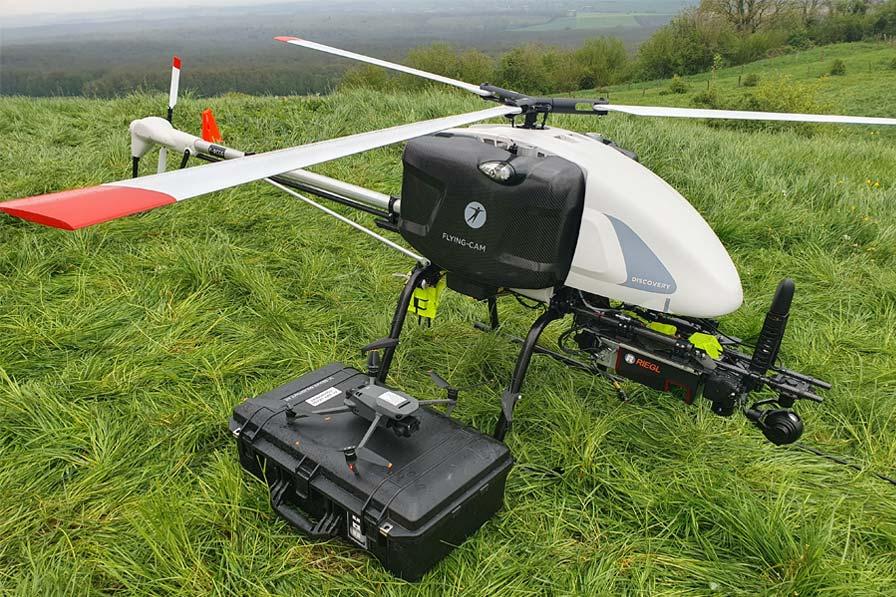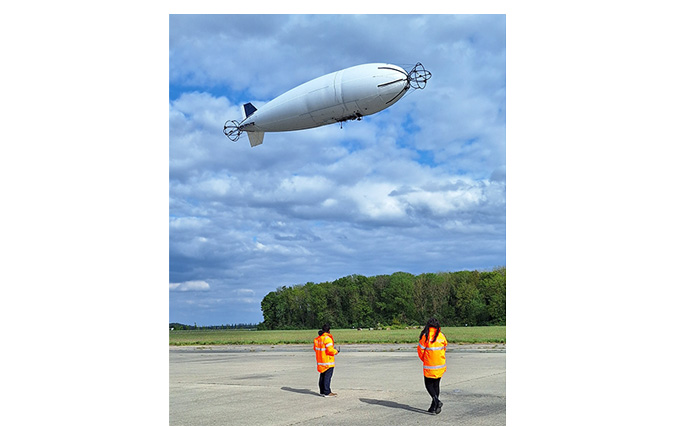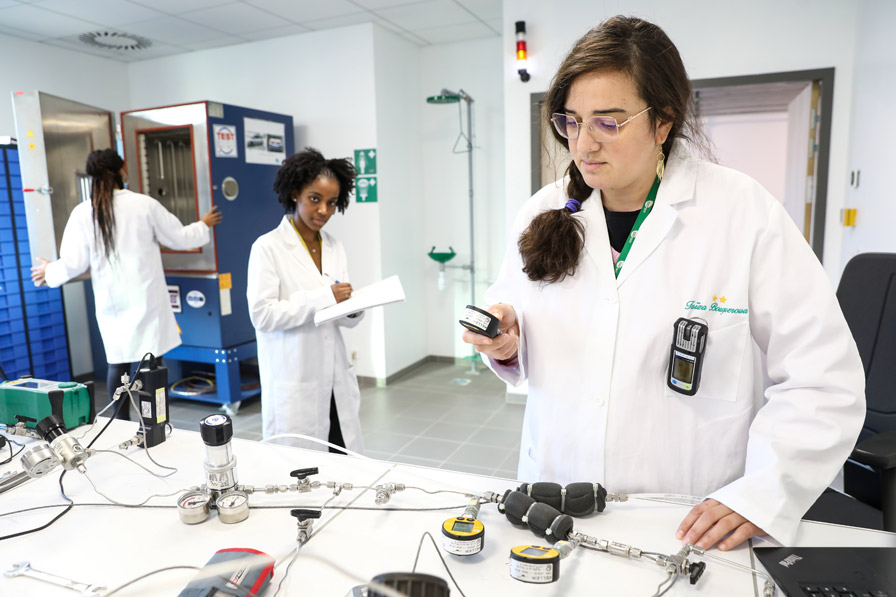From AI to drones, satellites and beyond, GRTgaz is innovating to keep its gas transmission grid under watch

The French government requires that gas transmission grids be placed under strict and regular surveillance. Over the past few years, GRTgaz has been experimenting with new more efficient, lighter and less carbon-intensive solutions. Find out about the 4 innovations in the making.
"We have to ascertain that there are no uncontrolled third-party works* that might damage it, as well as rule out the possibility of ground movements or bank collapses."Michel Pinet
GRTgaz's surveillance officer
Each day, GRTgaz is required to see to the integrity and safety of its network - more than 32,000 km of underground pipelines across France. “We have to ascertain that there are no uncontrolled third-party works* that might damage it, as well as rule out the possibility of ground movements or bank collapses,” explains Michel Pinet, GRTgaz's surveillance officer. For the past thirty years or so, two-thirds of this work has been possible by air, the remainder being carried out by road. Every year, some 350,000 km are scrutinised from the air and over 100,000 km by car. However, for some time now, GRTgaz has been expanding its range of tools to step up, simplify and decarbonise those monitoring operations. Its RICE (Research & Innovation Center for Energy) research centre is at the forefront of exploring the latest innovations in this field.
*Works carried out near GRTgaz facilities
Innovation no. 1: artificial intelligence
In early 2024, working in partnership with a specialist company, a sensor with artificial intelligence on board the aircraft will be tested. “Today, every flight requires a pilot and a surveillance observer. With a smart sensor of this kind, one pilot could be enough," says Michel Pinet. Thanks to pattern recognition, the AI is able to issue in-flight alerts if it detects an imminent risk. This solution is also beneficial in reducing the carbon footprint of surveillance, since it involves a smaller, and thus less fuel-consuming, aircraft. If the trial is successful, it could be adopted in 2025, by incorporating this technology into the new air surveillance contract.
Innovation no. 2: the drone
At the end of April, GRTgaz launched a first-of-its-kind experiment in France: surveillance by an "out of sight” drone, i.e. too far away for its pilot to see, over a distance of 30 km. In 2022, as part of its Sky Safe project, GRTgaz had already received exceptional approval to use out-of-sight drones over a distance of 20 km. “At the time, we were held back by the solution’s limitations, in particular the fact that the electric drone had insufficient range to complete the entire flight,” explains Michel Pinet. That's why the experiment we're starting uses a motorised drone. At the same time, GRTgaz and its partners FlyingCam and SkyBirdsView have continued to improve the on-board camera and the automated network monitoring platform.
However, drones will not replace aerial surveillance overnight. According to Michel Pinet's projections, the switchover will take around ten years.
Lastly, drones are showing promise in another type of another type of surveillance mission: the search for methane emissions, the framework of which will be strengthened in 2025 by a new European regulation. In the long term, drones could replace helicopters on certain missions of this type, which are used today because of their efficiency.
The network's three monitoring levels
The network is divided into three risk levels. Nearly 70% of the 32,000 km of GRTgaz's network has to be monitored once a month. However, in the most rural areas, where the risks are lowest, half-yearly or even annual monitoring is possible. In urban areas, in contrast, fortnightly or weekly monitoring is required.
Innovation no. 3: the dirigible balloon
Airships are making a comeback in many sectors, and GRTgaz is also exploring this tool. In September 2024, the company will test for the first time the detection of leaks on the network from a hydrogen-powered blimp developed by the French start-up HyLight. “The balloon offers many benefits for this type of mission, in particular its silence and its absence of CO2 emissions", notes Michel Pinet. The only real constraint on the balloon is that it has to be stored on the ground at night, requiring a large sheltered area.

Innovation no. 4: satellite
It's off to space! After first exploring satellite as an avenue for monitoring third-party works, in conjunction with Airbus Defense and Space in 2020, GRTgaz turned to Orbital Eye and its algorithmic solution for analysing optical, radar and multispectral satellite data. It is capable of calculating risk probability levels in the monitored zone. After encouraging initial results, the experiment was extended in 2023 to the whole of the Ile-de-France region and the urban areas of Lyon and Nantes, all with improved image resolution. “The added value has become even more visible. The satellite reduced our movement requirements”, say Carine Lacroix and Guillaume Coudoulet, respectively programme manager and research engineer at GRTgaz's RICE (Research & Innovation Center for Energy), in charge of the satellite surveillance mission. This year, GRTgaz took a step towards definitive adoption by deploying Orbital Eye's solution in an ultra-urbanised area of the Paris region. Then, at the beginning of the year, all those responsible for monitoring GRTgaz's third-party works received specific training in the use of the satellite interface.

